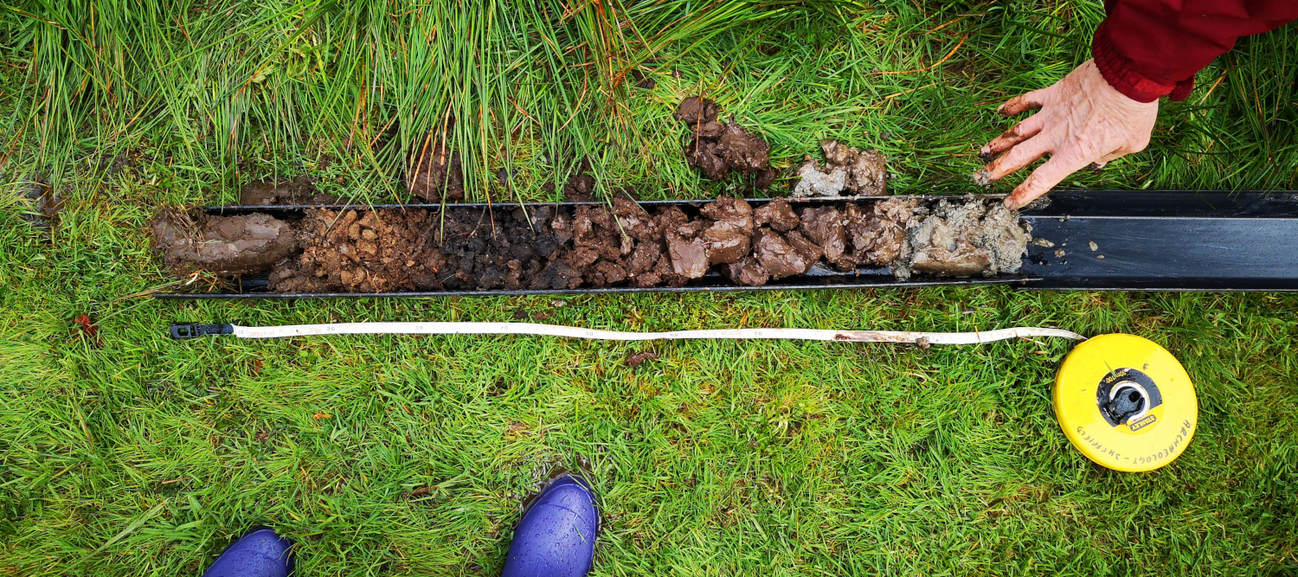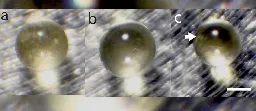
Soil Science
- Patterson et al. 2018 - Effects of stockpiling on selected properties of opencast coal mine soils
ABSTRACT: Soil stockpiling is a necessary component of opencast coal mining and, because most of the soils involved have arable potential, this involves the possibility of serious soil degradation. A study at four mines on the Highveld of South Africa involved sampling a number of stockpiles of various ages and origins. Samples were also collected from unmined adjacent soils, as well as rehabilitated areas. Results of stockpiling showed a deterioration in all physical and chemical parameters studied. The soil profile texture gradient was disturbed, due to mixing of surface and subsurface materials. Stockpile bulk density rose by 4% from unmined soils and by a further 6% in rehabilitated areas, indicating continuing compaction problems. Cation exchange capacity values did not entirely correspond with the textural changes, suggesting increased leaching, whereas pH values decreased for many stockpiles, requiring post-mining liming to re-establish suitable environments. Organic carbon levels on stockpiles fell by 5%,
and by a further 35% to rehabilitated areas. Increasing age of stockpile did not seem to equate to a correspond- ing increase in degradation, except possibly for pH, which showed a weak correlation. Recommendations from
the study include the use of ‘cut and cover’ rehabilitation techniques; continuous soil specialist consultation, and limitations on stockpile height and duration.
- How do you test for soil contaminates?
I know I can send soil samples to my local university extension office for testing, but how do I test soil for glyphosate-based herbicides, lead, arsenic, and other contaminates?
As a citizen scientist I'm about to get into composting more on my property and would like to know more.
- Billions of tons of water potentially trapped in glass beads in the lunar regolithwww.livescience.com China discovers strange glass beads on moon that may contain billions of tons of water
Scientists made the discovery of water trapped inside glass spherules on the moon after analyzing soil samples brought back by China's Chang'e-5 mission

- clay skins for the win

Clay skins are formed from the translocation of clay within a soil profile in a process called Lessivage.
- [Profile] - An Orthic Black Chernozem developed on glaciofluvial deposits

Note the Krotovina (filled in burrow) immediately above the scale stick. We were making monoliths, which is why the sides are cut out.
- Soil Science Resource Collection for the Sidebar
Got some mud you'd like to link on the sidebar? Chuck it in here.
- Soil Remediation Questions
I'm in Chicago, on the West Side, with two adjoining lots of uncertain history.
The lot I live in had no garage going back several decades, but I pulled out a foundation for something smallish when I laid down sod after moving in; and when I dug the posts for the fence (and raised beds) I found not one but two brick patios, one about six inches down and one about eighteen inches down. Also a lot of garbage, car parts, old clothes, and plastic.
The second lot has a sunken area with a footprint the same size as my brick four-square. I don't know if the limestone foundation is still down there. We filled in the area with wood chips to keep down weeds and reduce the likelihood of falling into the hole.
Right now we're gardening in raised beds, but I'd like to get to in-ground planting eventually. What do I need to watch out for, what do I need to do, and what plants can I use to pull any heavy metals out of the soil over the next few years? I know sunflowers work if you get them out by the root, and that's great, but is there anything more low-profile or more physically manageable, especially something native to the area?
- Akala and Lal - 1999. POTENTIAL OF MINE LAND RECLAMATION FOR SOIL ORGANIC CARBON SEQUESTRATION IN OHIO [Reclamation] [Soil Carbon]
Soils are an eective sink for carbon storage and immobilization through biomass productivity and enhancement of soil organic carbon (SOC) pool. The SOC sink capacity depends on land use and management. Degraded lands lose large amounts of C through SOC decomposition, erosion, and leaching. Thus, restoration of disturbed and degraded mine lands can lead to increase in biomass productivity, improved soil quality and SOC enhancement and sequestration. Reclamation of mined lands is an aggrading process and oers signi®cant potential to sequester C. A chronosequence study consisting of 0-, 5-, 10-, 15-, 20- and 25-year-old reclaimed mine soils in Ohio was initiated to assess the rate of C sequestration by pasture and forest establishment. Undisturbed pasture and forest were used as controls. The SOC pool of reclaimed pasture sites increased from 15.3 Mg ha1 to 44.4 Mg ha1 for 0±15 cm depth and from 10.8 Mg ha1 to 18.3 Mg ha1 for 15±30 cm depth over the period of 25 years. The SOC pool of reclaimed forest sites increased from 12.7 Mg ha1 to 45.3 Mg ha for 0±15 cm depth and from 9.1 Mg ha1 to 13.6 Mg ha1 for 15±30 cm depth over the same time period. The SOC pool of the pasture site stabilized earlier than that of the forest site which had not yet attained equilibrium. The SOC sequestered in 0±30 cm depth over 25 years was 36.7 Mg ha1 for pasture and 37.1 Mg ha1 for forest.
- Maguire 2009 - Fertilizer Types and Calculating Application Rates [Soil Fertility]
3 pager on how to calculate fertilizer rates. This premise is used frequently with organic amendments
- Zhang et al. 2020 - Residue incorporation enhances the effect of subsoiling on soil structure and increases SOC accumulation [Soil Physics]
Purpose Subsoil has great potential for increasing soil organic carbon (SOC) stock. Soil compaction decreases the content of SOC in the topsoil layer and leads to the formation of a plow pan in subsoil. However, measures for improving poor soil structure mainly concentrate on topsoil. This study aims to understand the effect of subsoiling management practices on soil aggregation and accumulation of SOC in both topsoil (0–20 cm) and subsoil (20–35 cm).
Materials and methods A field experiment was carried out in a Mollisol in northeastern China. The treatments included conventional tillage (CT), subsoiling tillage (ST), and subsoiling with residue incorporation tillage (SST).
Results and discussion The results showed that in comparison to CT, ST and SST not only had lower subsoil bulk densities (reduced by 9.42% and 13.61%, respectively) but also promoted the formation of macroaggregates (> 250 μm) in both soil layers; thus, soil structure stability increased. In the topsoil layer, the content of the > 53 μm aggregate-associated carbon (C) under ST and SST was greater than that under CT. In the subsoil layer, compared with CT, SST increased the organic C content (increased by 0.73–12.32%) in all the aggregate classes, but ST decreased the content of the < 2000 μm aggregate-associated C (6.09–18.96%) on day 150. The soil structure stability decreased by 13.06% and 22.21% under ST and SST after day 150, respectively, which was probably due to the clayey characteristics of the subsoil.
Conclusions We concluded that subsoiling would only improve the soil structure while increasing the loss of organic C. However, the effect of subsoiling on structure improvement was enhanced by residue incorporation, not only promoting soil aggregation but also increasing SOC accumulation.
- Posting for mod team
You can add me as a mod by clicking the three dots :) People have to post to be modded



